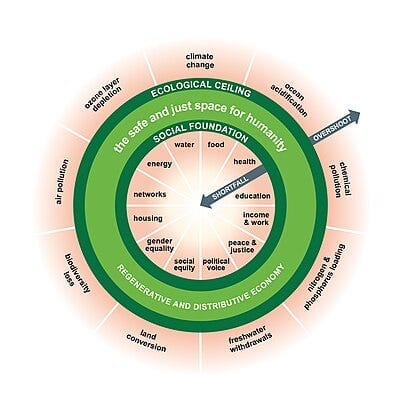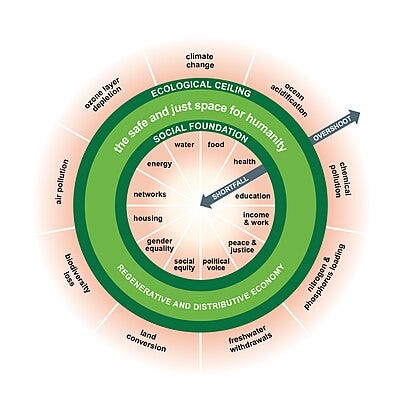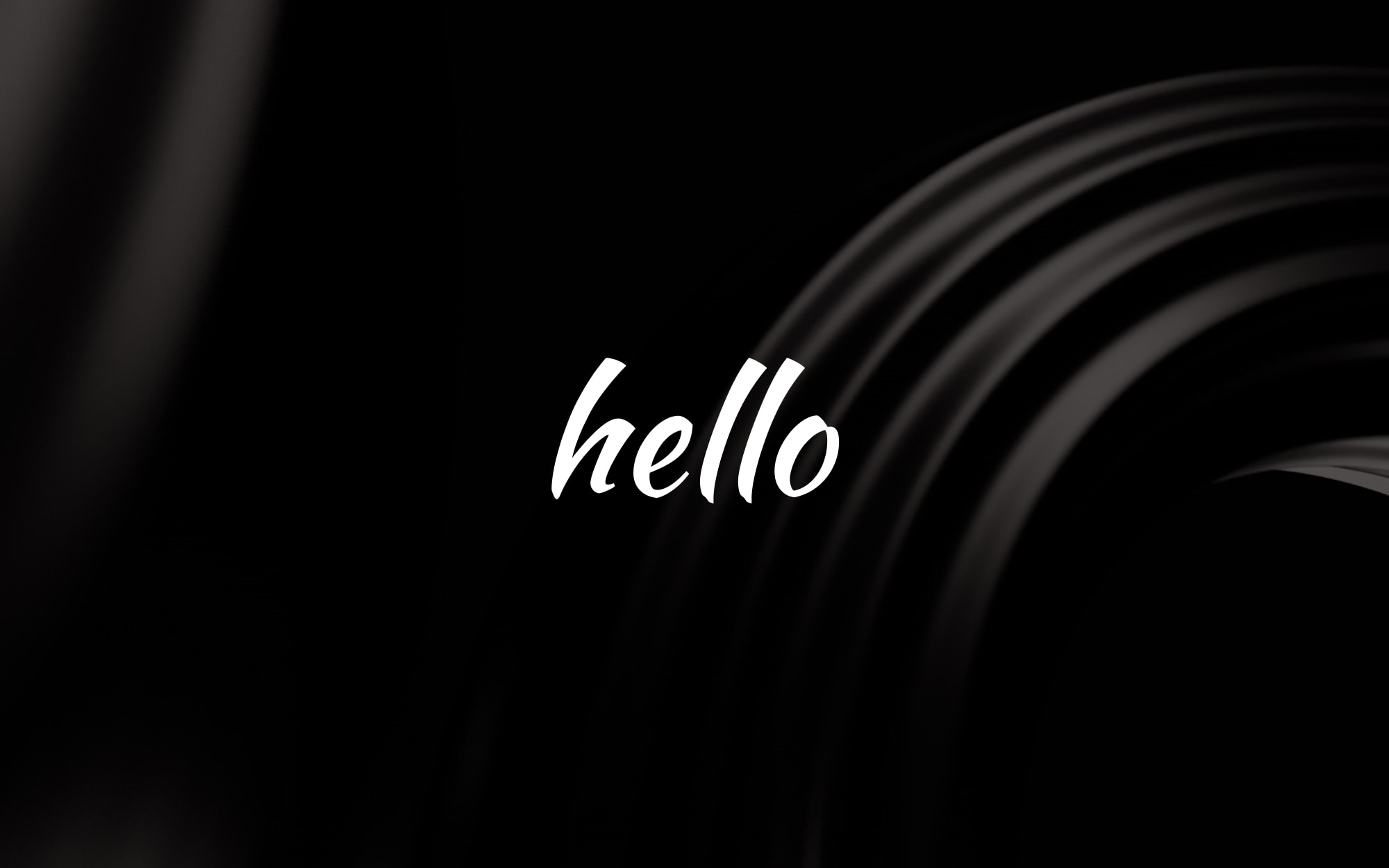Navigating the Crossroads of Technology and Humanity: Humane Technology

Humane actually means human, a kind of obsolete saying of human which comes from Latina word homo. But we are using humane as like man kindly. So, it kind of means human friendly technology. Or with ChatGPT english, digital innovations designed with human welfare in mind. So, not like binge-watching, more like old school an episode per week.
First things first. We have 2 successful guys from San Francisco. Aza Raskin and Tristan Harris. Aza actually founded another non-profit named Earth Species Project which focus on understanding non-human communication with AI. Kind of very cool. And another interesting thing about him is his father, Jef Raskin. He was a human-machine interface expert at Apple and worked for Macintosh for years. And Aza is also known as inventor of infinite scroll. So they have a family tradition: being top at tech industry. Tristan is less interesting but more mediatic co-founder of Center for Humane Technology (CHT).
With all their colleagues, Aza and Tristan have been very inspiring for me and especially on how I see my professional life. They are basically trying to convince us we are doing most of the things wrong with wrong incentives in tech industry.
Our journey began in 2013 when Tristan Harris, then a Google Design Ethicist, created the viral presentation, “A Call to Minimize Distraction & Respect Users’ Attention.” The presentation, followed by two TED talks and a 60 Minutes interview, sparked the Time Well Spent movement and laid the groundwork for the founding of the Center for Humane Technology (CHT) as an independent 501(c)(3) nonprofit in 2018.
You might know them from Social Dilemma, a Netflix documentary from 2020 focusing on hazardous effects of social media. They have a course named Foundations of Humane Technology and a great podcast, Your undivided attention. Within every episode, they are focusing on a more broad aspect of tech & society relations in podcast.
So, after finishing their course, I found myself consumed almost all of their content and I felt it would be nice to remember what I learned from them.
My very quick notes from the course
Persuasive technology
Persuasive technology refers to technologies that declare a psychological war for our attention.Nah, maybe not a good description. While we have Wikipedia page for it, how I dare to explain what is persuasive tech. And CHT has dedicated article for this topic as well. So, very quick takeaway is to be cautious about technology usage. We should keep in mind that every technologies, whether they’re as primal as fire and hammers or as modern as mobile phones and social media, they are just tools we can use. Technology companies are often compelled to capture more of our attention through legally permissible strategies. It’s a game they play by necessity. I am not sure if it is our fault or their fault, or even if it is a fault. Maybe the only thing we need is distinguish ourselves from others and use technology more advanced. I am not sure what more advanced means.
Externalities
Another term I learned is externalities of technology, which can be positive or negative. I think the term became famous by Arthur Pigou in the 1920s. A classical example of negative externality is cars causing air pollution, if car manufacturer don’t pay anything for that side effects. The obvious solution, even Arthur Pigou suggested in 1920 is tax. If you tax environmental effect, it would immediately become incentives for companies to be more careful.
Example for positive externality as written in Wikipedia page is being publicly connected by using an interconnected device such as mobile phones. But CHT had another view on that. They basically say, we need to be careful about side effects, especially for younger people. While Zoom feels you more interconnected with less effort, it might also come with back pain in a couple of years. But it also has positive externalities of reducing transportation cost and carbon footprint as well.
Another example from CHT is by using latest technology we feel good and updated. But don’t forget the externality of producing too much garbage and e-waste.
Kate Raworth Donut’s Economics

Off the topic, for me, best way to learn is looking at a visualization while some voice talking behind. This is the best combination, If I couldn’t find that combination, either visuals or podcasts are also very good.
So, I let you check the image above and learn what it is. Image is clear enough to tell the story. If you need a couple of example, here are my notes from the course:
- Regenerative healthy lifestyles are more robust than investing in new drugs.
- Implementing energy efficiency programs so that we use less energy is very often cheaper and more environmentally friendly than generating more energy from renewable sources.
But I have a further question about that concept:
- What if we just decided to stop producing new mobile phone for 5 years. Theoretically, we should live without a new phone, as almost anyone needs a phone, already have a phone. But it is neither possible nor applicable. But why? This is real me, Ufuk, asking that question :) I know all obvious answers come to your mind, but they are not the exact answer.
What is Goodhart’s Law?
“When a measure becomes a target, it ceases to be a good measure.” — Charles Goodhart
It basically says, if we set a specific goal for a team, they tend to optimize everything to meet that criteria. All the possible or negative consequences are not their problem. That’s why social media apps are fighting for your divided attention, even 20 seconds of attention means extra money for them.
A couple of extra links from the course materials
They are all great websites you need to check:
PubPub · Community PublishingCollaborative Community Publishing
Design JusticeAn exploration of how design might be led by marginalized communities, dismantle structural inequality, and advance…
Humane by DesignGuidance for designing humane digital products and services.
Extra sources worth mentioning
If you are a listener learner like me, then I listed a couple of extra podcast series for you.
Designing a humane future
Podcast - Designing a Humane Future - TrickleUp DesignDesigning a Humane Future is a podcast that explores how we can actively engage in imagining and designing a future
They made 7 episodes between 2021 and 2023 and as a design agency they called themselves social innovation design studio. These episodes would be a great introduction if you just need to understand what the heck is going on here.
Green the web
Green UX/UI design for websites and apps - Green the webGet your own website sustainable with green UX/UI design. Plus, get fast loading times, great SEO, accessibility and…
Sandy Dähnert is actually an UX / UI designer focused on designing environmental friendly websites. But her podcast and her website has a lot of humane design tips & tricks especially for internet industry. From her words:
I am a UX/UI designer from Cologne. For more than 10 years I’ve been helping brands to design user-friendly, accessible and (since 2018) ecologically sustainable websites, apps, online shops and other digital products. Because we as designers and companies have a responsibility. And because, to be honest, it has a lot of benefits.
So, her episodes are kind of 20–30 minutes best practices about web and internet. You should at least subscribe to her podcast.
Humanitarian AI
Humanitarian AIHumanitarian AI is a meetup.com community started by former United Nations staff linking local groups in Cambridge, San…
Another actively publishing group focused on AI. Actually, from 2023 CHT podcast have been mostly focused on AI. I think they need to give a chance to other industries.
As a result
I have intense mental hyperactivity disorder, so I don’t have an ability to sum up everything easily. I am premium ChatGPT user instead:
In exploring the intersection of technology and humanity, this journey illuminates the profound influence of humane technology on our lives and society. Figures like Aza Raskin and Tristan Harris, along with initiatives such as the Center for Humane Technology and the Earth Species Project, underscore the urgent need for a technological paradigm that prioritizes human welfare over mere engagement metrics. Through a critical examination of persuasive technology, the externalities it engenders, and the economic models that might offer sustainable alternatives, we’re reminded of the power and responsibility we hold as users and creators of technology. The insights garnered from humane technology courses, podcasts, and documentaries provide not only a blueprint for more ethical technology use but also challenge us to rethink our relationship with digital tools. As we navigate this digital era, the lessons learned call for a collective reevaluation of how technology is designed, implemented, and utilized, urging us toward a future where technology truly serves humanity’s best interests. This exploration is not merely academic but a call to action for everyone involved in the creation and consumption of technology to foster a more connected, sustainable, and humane world.
References
- Humane Wiktionary page: https://en.wiktionary.org/wiki/humane
- Aza Raskin Wikipedia: https://en.wikipedia.org/wiki/Aza_Raskin
- Tristan Harris Wikipedia: https://en.wikipedia.org/wiki/Tristan_Harris
- Earth Species website:
https://www.earthspecies.org/
- Jef Raskin (Aza’s father): https://en.wikipedia.org/wiki/Jef_Raskin
- Center for Humane Technology website:
https://www.humanetech.com/
Easter Egg: If you are someone working at CHT and read that article down to that line, please find me :)
- 2013 viral presentation:
http://minimizedistraction.com/
- Young Triston having a TED talk at 2014: https://www.ted.com/talks/tristan_harris_how_better_tech_could_protect_us_from_distraction
- Netflix documentary:
https://www.thesocialdilemma.com/
- Free course: https://www.humanetech.com/course
- Your Undivided Attention podcast: https://www.humanetech.com/podcast
- Arthur Pigou, economist, invented the term externality: https://en.wikipedia.org/wiki/Arthur_Cecil_Pigou
- Kate Raworth website about Doughnut Model: https://www.kateraworth.com/doughnut/
- Charles Goodhart (another British economist): https://en.wikipedia.org/wiki/Charles_Goodhart
- Me (for CHT team):) https://www.linkedin.com/in/ufuksfk/

